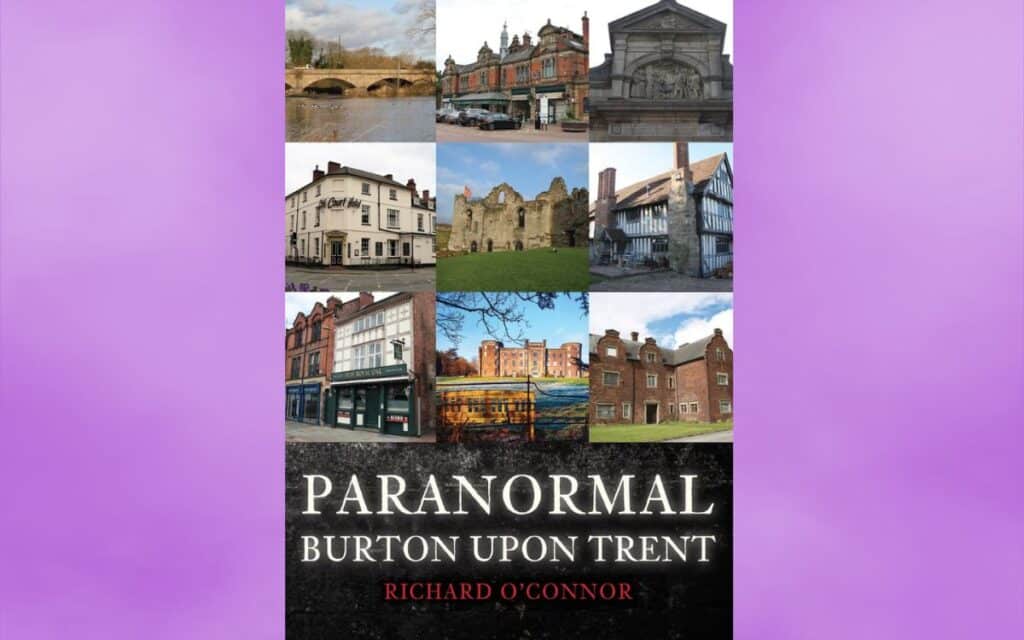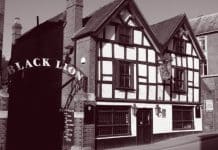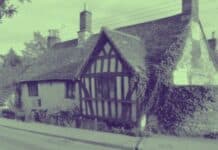Paranormal Burton upon Trent author Richard O’Connor talks to Spooky Isles about his latest book, revealing hidden ghost stories and eerie encounters that haunt the historic Staffordshire town

Interview with Richard O’Connor about Paranormal Burton Upon Trent
SPOOKY ISLES: What drew you to Burton upon Trent in particular for this book, and did you discover anything unexpected about the town’s haunted history during your research?
RICHARD O’CONNOR: For many years, Burton upon Trent was almost like home to me. When I was nine, my family moved from a Birmingham suburb to the village of Blackfordby, just a few miles from Burton, where I had a happy and fairly normal childhood.
I’ve always been fascinated by the paranormal, watching TV shows about aliens and flipping through ghost books.
At 17, I met my first girlfriend, whose father had recently founded the Swadlincote Paranormal Investigation Team. He kindly invited me to join some of their investigations, and soon I became a team member.
In the years that followed, we investigated various locations in and around Burton, listening to the stories of those seeking help. It quickly became clear that Burton has a rich and varied collection of ghosts – from medieval monks and illuminated spectres to mysterious misty shapes and encounters with former pub patrons.
I’ve been out of the investigation scene for over a decade, so aside from a few old documents and write-ups from the team’s heyday, I had to start my research for Paranormal Burton upon Trent from scratch.
I relied on newspaper archives, historical books, and first-hand accounts from witnesses. The more I researched, the more I realised how haunted Burton really is.
Many people think of Burton primarily as a brewing town, but your book reveals a much darker, more mysterious side. What are some of the most surprising ghost stories or eerie legends you came across?
One surprising discovery was how much older Burton is than I had thought, with over a thousand years of history feeding into its ghostly tales. While many of the ghosts are relatively friendly or not frightening enough to trouble their witnesses, I did come across some darker stories.
At Bretby Hall, for instance, a beautiful countess died mysteriously at the young age of 25. After a close friendship with the Duke of York (later King James II), she was imprisoned by her husband at the hall. She fell ill after drinking sacramental wine, and though many suspected poison, her ghost is said to appear to brides in the room where she died, replaying her final moments.
Sinai Park House, Burton’s most haunted building, dates back to the 13th century and is home to around 50 ghosts, including black dogs and Cromwellian soldiers. The house was once a retreat for monks recovering from bloodletting, and one of them, involved with a servant girl, murdered her when she became pregnant. Both haunt the grounds to this day.
The eeriest tale I found, however, was the Revenants of Drakelow – a medieval legend about the undead rising to terrorise a village, spreading plague and death until the settlement was abandoned.
You mention encounters with ‘murderous monks’ and ‘recently deceased’ spirits. Do you find that certain types of hauntings or ghostly characters are unique to Burton, or are these stories part of a larger pattern you’ve seen elsewhere in the UK?
Some of the more recent hauntings, especially in Burton’s pubs, follow a familiar pattern seen across the UK – pint glasses smashing, beer taps turning on and off, and strange noises in cellars. But a few of Burton’s spirits are linked to more unique buildings.
For example, the Cons Club, once a gathering spot for the town’s elite, is haunted by a friendly postmaster, a remnant of the building’s original use as a post office. And at Sinai Park House, Henry Paget, the war general who fought at the Battle of Waterloo, is said to make his presence known with the thud of his footsteps or a ghostly touch.
A common theme in ghost stories is a link to trauma, and this is especially evident in Hanbury, where a World War II munitions store exploded, killing around 70 people.
Visitors to the site often report an overwhelming sense of sorrow, and some even claim to hear the victims’ cries echoing from the crater left behind.
Your book includes exclusive reports from local paranormal investigators. What were some of the most compelling or chilling experiences shared with you during your research?
One compelling story came from the town’s historic market hall. I found a report from the Swadlincote Paranormal Team, including notes from my own visit in the early 2000s. While we only experienced lights turning on and off that night, the tales from a caretaker’s son who lived there in the 1970s were far more vivid.
Alan and his family often saw the ghost of an old lady, who even appeared in their bedrooms at night. The family nicknamed her ‘Auntie’ and eventually got used to her presence, though she did manage to scare off a few of Alan’s girlfriends.
Another chilling encounter was reported on the roads near Bretby Hall. Multiple witnesses have seen a young woman on an old bicycle, but the most eerie story came from a security guard who spoke to her during a rainstorm. When he reviewed the CCTV later, the woman was nowhere to be seen, leaving the guard talking to thin air.
When investigating the supernatural, how do you balance historical fact with folklore and eyewitness accounts to create a cohesive narrative?
Since many ghosts are tied to the history of the buildings they haunt, learning more about that history adds substance to the stories. I set a personal rule not to include accounts from spiritual mediums in my book, as I wanted credibility and trust. Instead, I focused on stories from everyday people—many of whom describe themselves as sceptics but have experienced something they can’t explain.
Delving into newspaper archives also helped ground the stories in historical fact. In some cases, like at Brizlincote Hall, the archives revealed over 100 years of documented paranormal activity, adding layers to the building’s haunted reputation.
Are there any specific locations in or around Burton that you found particularly charged with paranormal energy or a sense of the uncanny?
One of my favourite locations is Gresley Old Hall, a dark and derelict building with all the elements of a classic haunted house.
When I was part of the Swadlincote Paranormal Investigation Team, we visited Gresley numerous times, and it rarely disappointed. The atmosphere alone is enough to make your skin crawl, but during one visit, I experienced a full apparition—an incredibly vivid sighting, one of only two or three I’ve had in my life.
Although it’s been years since I last visited, Gresley Old Hall continues to attract paranormal groups from all over the country.
What’s next for you after this book? Are there other locations with untold haunted histories that you’re eager to explore?
My next book takes me back to my childhood in the Black Country, where I explore the region’s ghosts.
Unlike Burton, which is just one town, the Black Country is a vast area with a rich array of ghost stories. Some are well-known legends, while others have never been written down before.
I expected most of the stories to come from the Industrial Revolution, but as with Burton, my research led me further back in time, uncovering tales from the medieval period and earlier.
I even spent a night in Dudley’s most haunted hotel and visited its famous castle. Keep an eye out for Paranormal Black Country, set to be published in summer 2025.
Paranormal Burton Upon Trent by Richard O’Connor is available from Amazon.
Have you read Paranormal Burton Upon Trent? Tell us your thoughts about Burton Upon Trent in the comments section!







